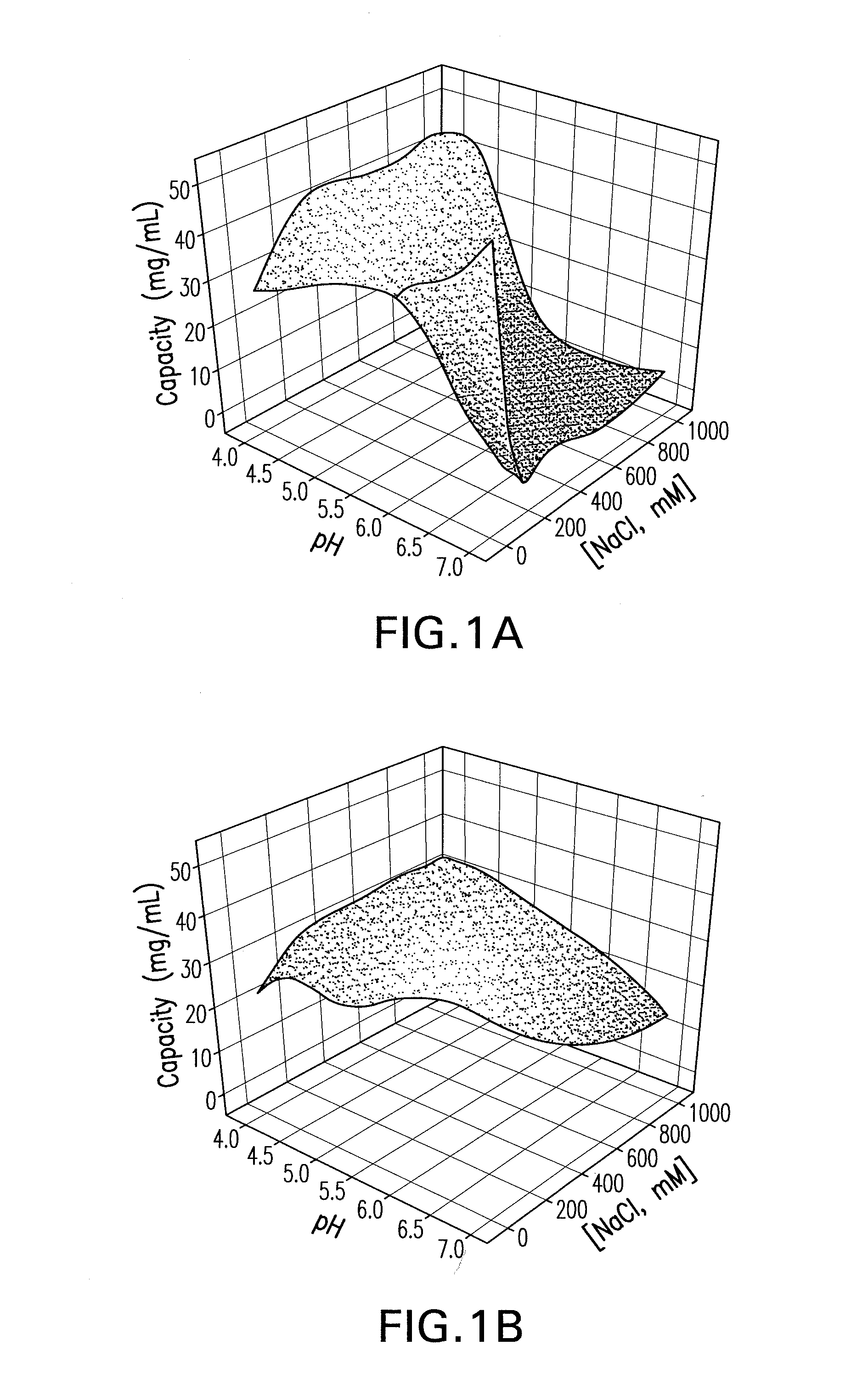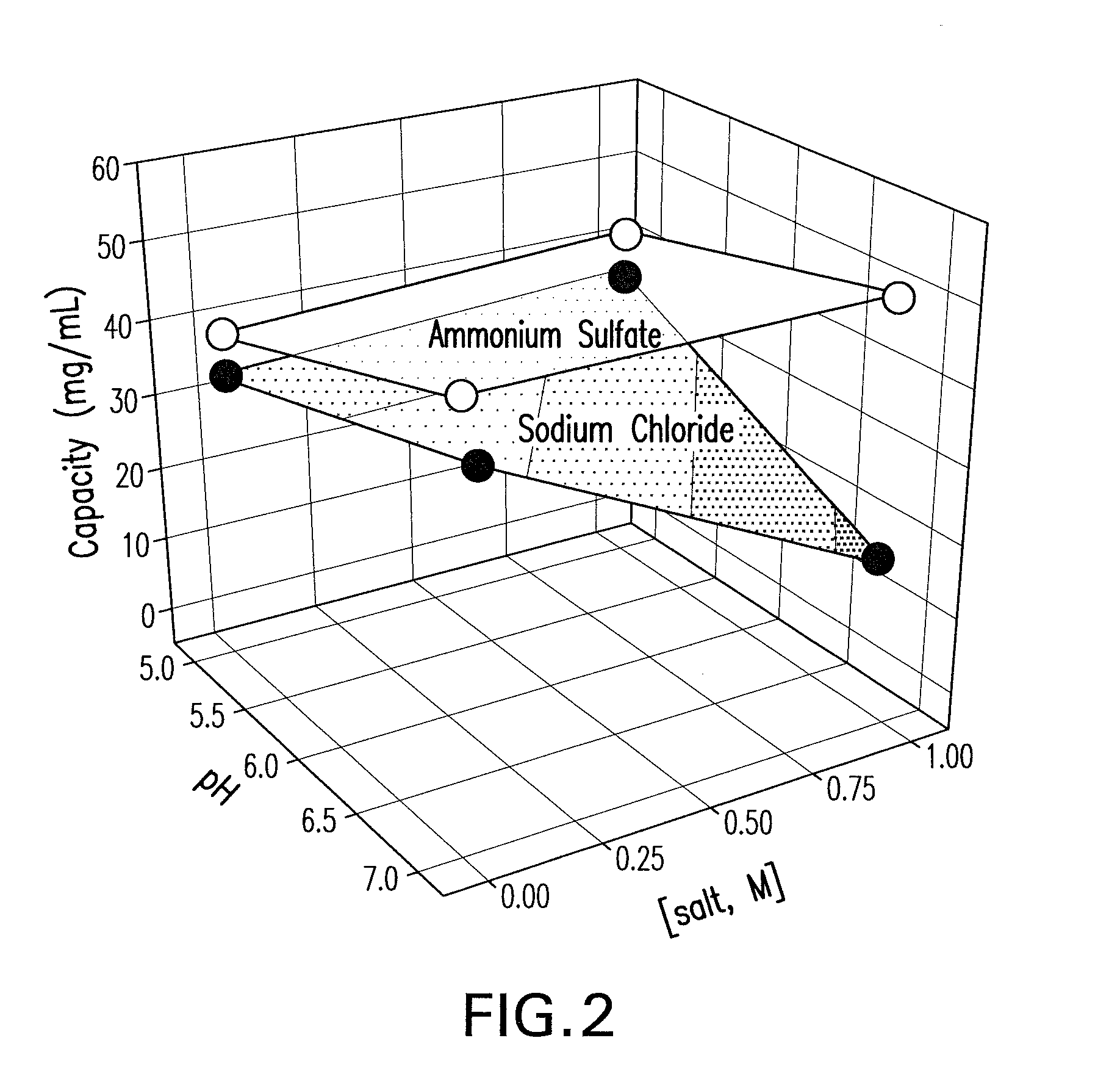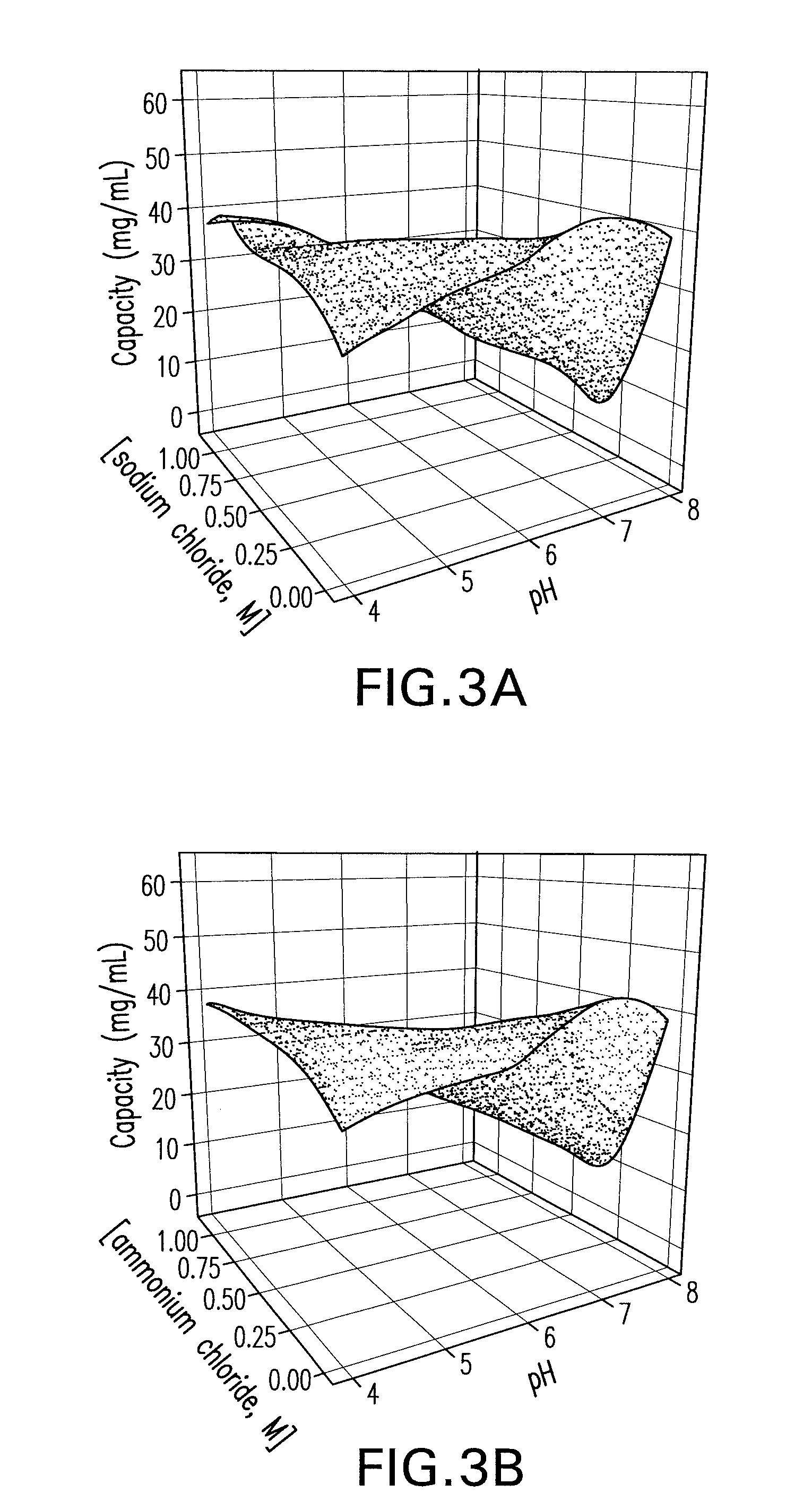Use of mixed mode chromatography for the capture and purification of basic antibody products
- Summary
- Abstract
- Description
- Claims
- Application Information
AI Technical Summary
Benefits of technology
Problems solved by technology
Method used
Image
Examples
example 1
Complexity of Design Space in Mixed Mode Chromatography
[0087]Mixed mode chromatographic adsorbents offer the promise of increased selectivity and more salt-tolerant loading conditions in the purification of biomolecules including monoclonal antibodies. However, their design space is considerably more complex and the conditions for optimal operation less predictable.
[0088]In order to get a better understanding of the differences, two different human monoclonal antibodies (mAb), each of the IgG1-κ subclass with a pI of about 9.0, were used with Capto MMC™. The first monoclonal antibody (an anti-ADDL mAb) targets Amyloid Beta-Derived Diffusible Ligand. See U.S. Patent Application Publication No. 2006 / 0228349. The anti-ADDLs mAb was expressed in CHO bioreactors and purified from clarified supernatant by standard chromatography (protein A and ion-exchange chromatography) and filtration processes. See Kelley, 2007, Biotech Progress 23:995-1008; Shukla et al., 2007, J Chromatogr B 848:28-3...
example 2
Pre-Screen
[0091]Pre-screening experiments were carried out with the purified mAb CS-D7 to establish the approximate ranges of loading pH and salt concentration, ensure product solubility under these conditions, determine the approximate adsorbent capacity, and identify preliminary conditions for product elution. An appropriate loading time must also be established in this stage to ensure that a semi-equilibrium state (≧80% binding) is reached for the representative assessment of column binding conditions. The total load time is controlled by the pipetting flow rate, the volume pipetted, and the number of aspiration-dispense cycles. In this study, a conservative load time of 40 minutes was used to ensure semi-equilibrium binding, while still allowing adequate experimental throughput.
[0092]A factorial design was carried out with sodium chloride and ammonium sulfate out to establish the appropriate parameter ranges for pH and salt concentration and to estimate the maximum binding capac...
example 3
Primary Screen for Optimization of Solution Conditions
[0093]A primary screen was carried out following the pre-screen to evaluate the binding and selectivity of the Capto MMC™ for the mAb CS-D7 and the contaminating host cell proteins. Binding of mAb CS-D7 and host-cell proteins to the Capto MMC™ adsorbent was examined as a function of pH, salt concentration, and salt type in a screening experiment. Thirty-two chromatography experiments (4 runs×8 experiments) were carried out for each salt type, in which each column was overloaded and pH and salt concentration were varied. The pH was varied at five points (4.0, 5.0, 6.0, 7.0, and 8.0) and the salt concentration at six points (0, 0.25, 0.50, 0.75, 1.0, and 1.25). The column feed was exchanged into each solution condition by dilution (≧10-fold) from a concentrated feedstock. In each experiment, the adsorbent was overloaded at a process relevant concentration to provide an estimate of capacity.
[0094]Three parameters were examined in th...
PUM
| Property | Measurement | Unit |
|---|---|---|
| Fraction | aaaaa | aaaaa |
| Fraction | aaaaa | aaaaa |
| Fraction | aaaaa | aaaaa |
Abstract
Description
Claims
Application Information
 Login to View More
Login to View More - R&D
- Intellectual Property
- Life Sciences
- Materials
- Tech Scout
- Unparalleled Data Quality
- Higher Quality Content
- 60% Fewer Hallucinations
Browse by: Latest US Patents, China's latest patents, Technical Efficacy Thesaurus, Application Domain, Technology Topic, Popular Technical Reports.
© 2025 PatSnap. All rights reserved.Legal|Privacy policy|Modern Slavery Act Transparency Statement|Sitemap|About US| Contact US: help@patsnap.com



